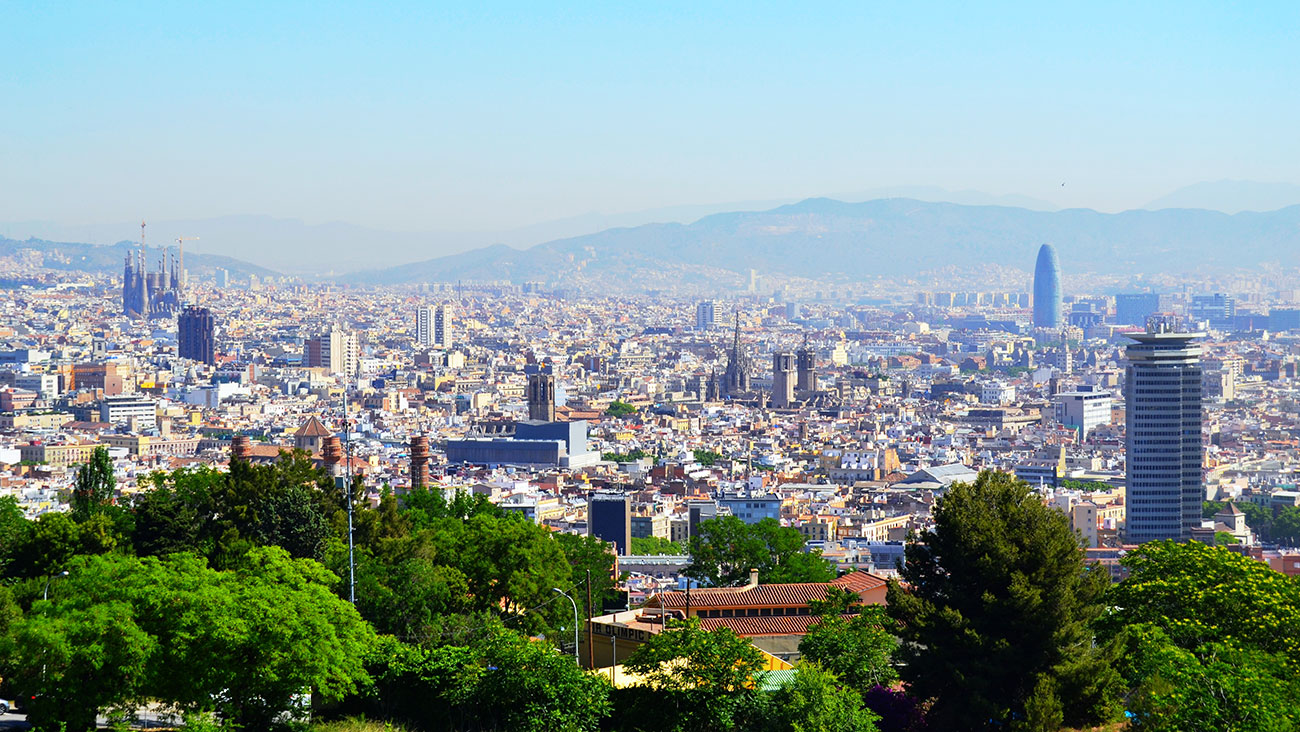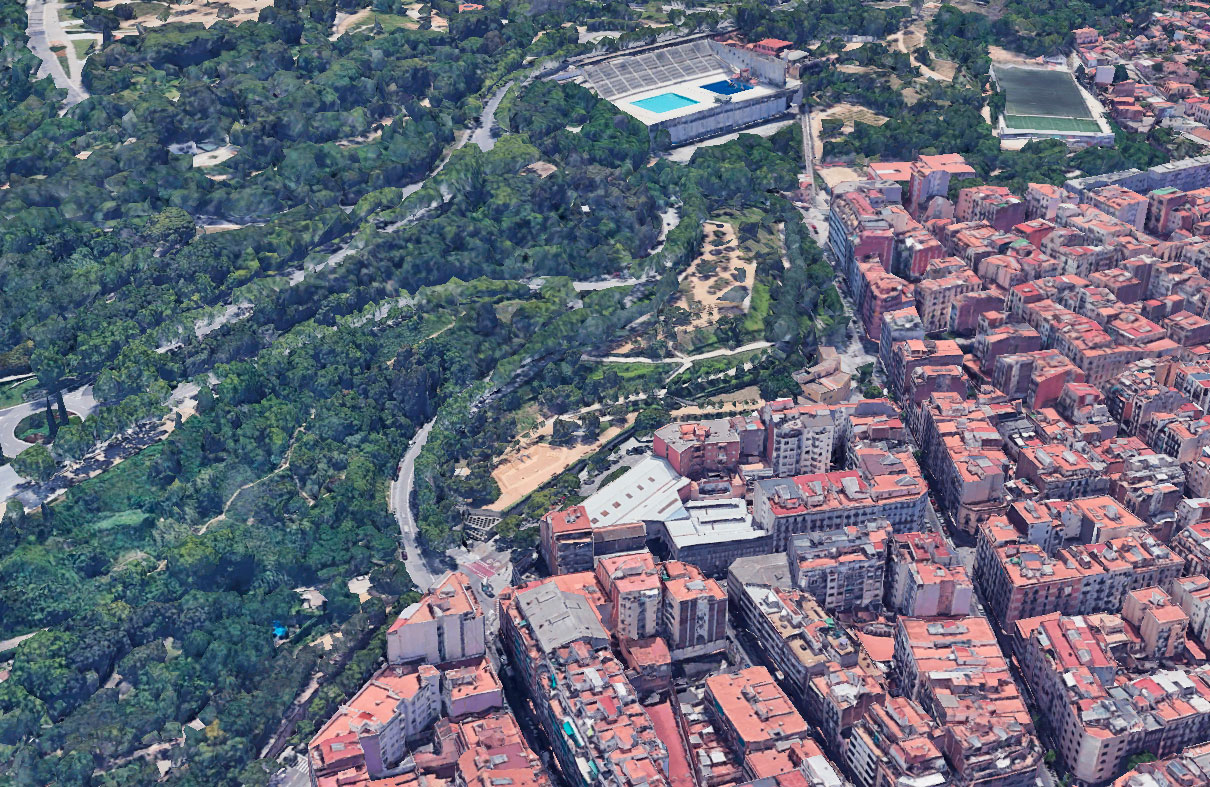

In the Middle Ages, the lands located outside the walls of Barcelona were areas of agricultural use, and near the walls could not be built because it was considered a military zone.

In 1751 the construction of the Montjuďc's Castle began. With the
arrival of new manufacturing activities starting the second half of the eighteenth century, came several spectacular changes to an area that we now know as the
neighborhood of Pueblo Seco (Poble Sec in Catalan).
The medieval walls of Barcelona were demolished in 1854 and the
expansion plan, the one created by the Eixample District, did
not include this area of the Pueblo Seco, as its steep slopes were not considered an interesting area for construction.
The owners of these lands took advantage of this to urbanize the sector without so strict regulations from the larger urbanization plan.
From 1858 onwards, the construction of simple buildings began, with the birth of the first workers' settlements such as the
Satalia, the Santa Madrona or the San Bertrán's Orchards.
This neighborhood, enclosed between the Barcelona's Port, the Spain Square , the
Paralelo Avenue, it is immensely lucky to have it in its heart, the
city's largest green lung: the Montjuďc Mountain.
On this Guest House, the time stood still and you can relax to plan your day without pressure.
Historical building with cozy rooms for all budgets. Due is not necessary to spend a lot of money to enjoy a good located accommodation.
Good located and cozy Guest House near all the important
point that you would love to visit in Barcelona.
Totally renovated Guest House with all comfort that you would like to have during your stay in Barcelona.
FOLLOW US!